Manas National Park is a 366.8-square-mile wildlife sanctuary located in the Himalayan foothills in the state of Assam, India. This Manas National Park travel guide will aim to provide you with an in-depth dive into what to see and do when you visit, as well as how to get there, what to plan for, pricing info, and what to eat.
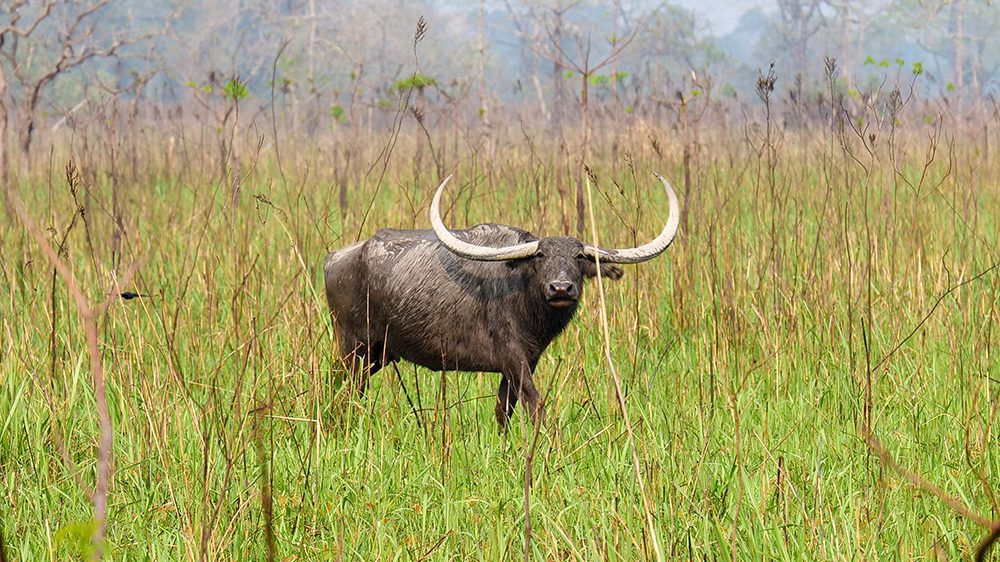
In addition to its status as a National Park, this beautiful area of Assam is also a UNESCO World Heritage Site, a Project Tiger Reserve, an elephant reserve, and a biosphere reserve. Though the park was declared a sanctuary in 1928, it wasn’t officially established as a national park until 1990, when several reserved forests were added to the sanctuary.
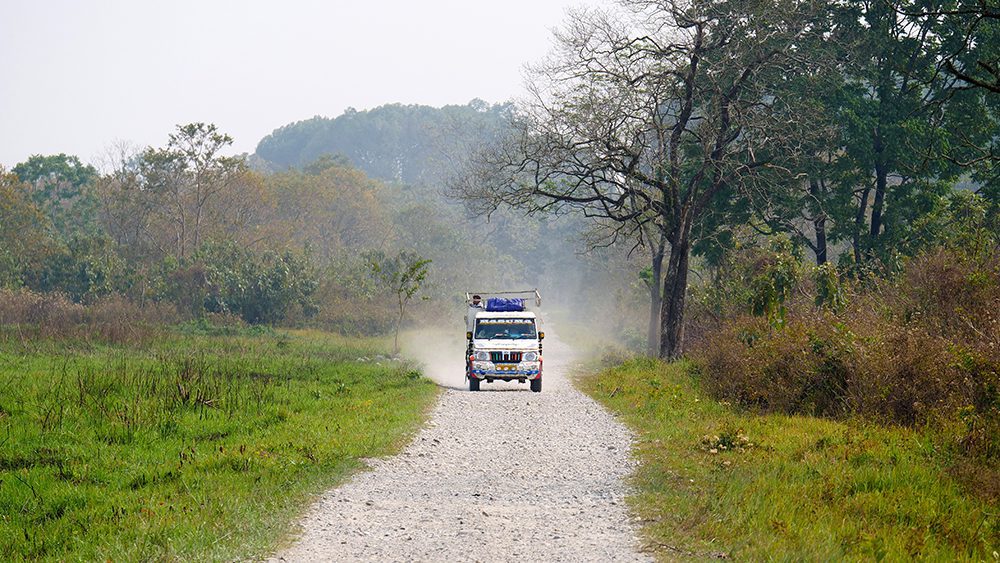
Manas National Park shares a border with Royal Manas National Park in the neighboring country of Bhutan. Manas National Park is well-known for its rare and endangered wildlife, including the wild water buffalo, the golden langur monkey, the Assam roofed turtle, the pygmy hog, and the hispid hare. There are a lot of things for curious travelers to see, do, and explore, so check out our complete Manas National Park travel guide below to learn more!
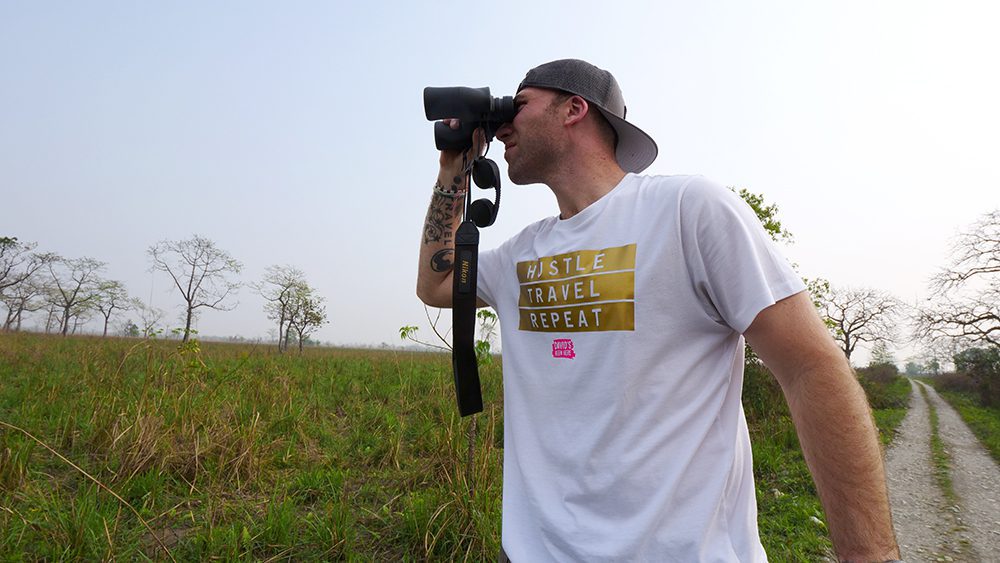
If you’re planning on visiting Manas National Park during your time in northeast India, keep in mind that the park is closed to visitors from June to September. While this means you won’t be able to visit the park during your summer vacation—at least, if you live in the northern hemisphere—the park is open during the fall, winter, and spring months.
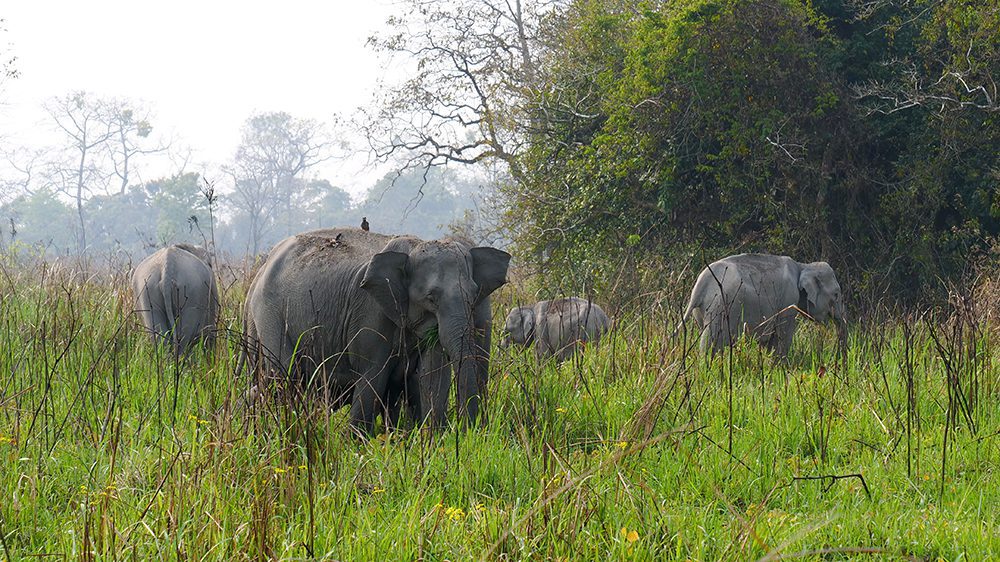
The ideal time to visit Manas National Park is between November and April. I visited in March of 2019 and had a brief, but wonderful time there. Continue reading our Manas National Park travel guide to learn what you need to do before you arrive!

Before you visit Manas National Park, there are a few things to consider. The park has a humid, sub-tropical climate, so pack accordingly. Loose-fitting cotton clothes are best during the spring. It can get chilly at times in the fall, which is why we also recommend bringing a heavier sweater or hoodie in this Manas National Park travel guide.
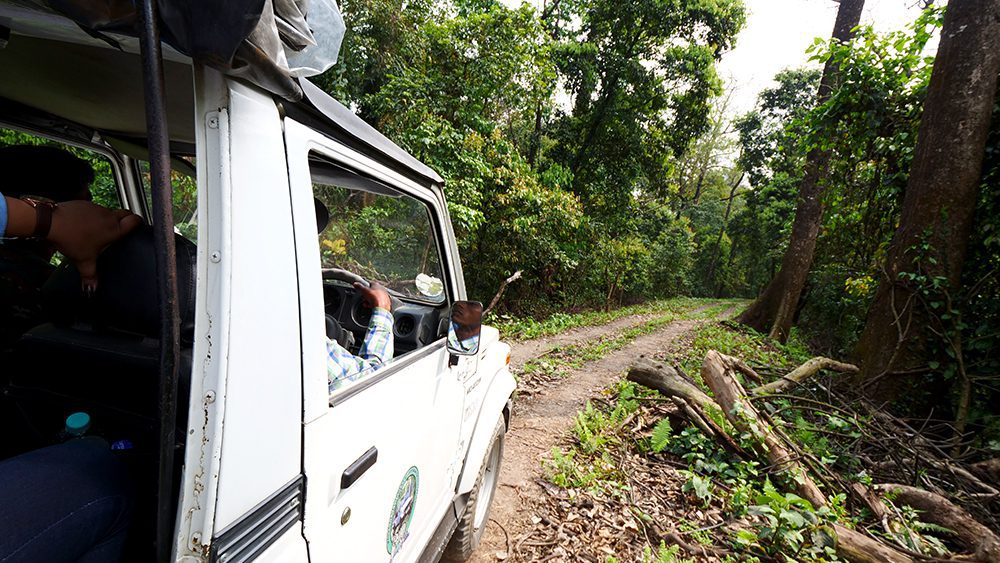
I also recommend bringing along insect repellent because the mosquitoes in Assam are no joke! They are relentless and you don’t want your park visit marred by swarms of them attacking you while you’re trying to enjoy a game drive. Don’t forget to wear sunscreen, as the hot Indian sun will likely be beating down on you all day long.
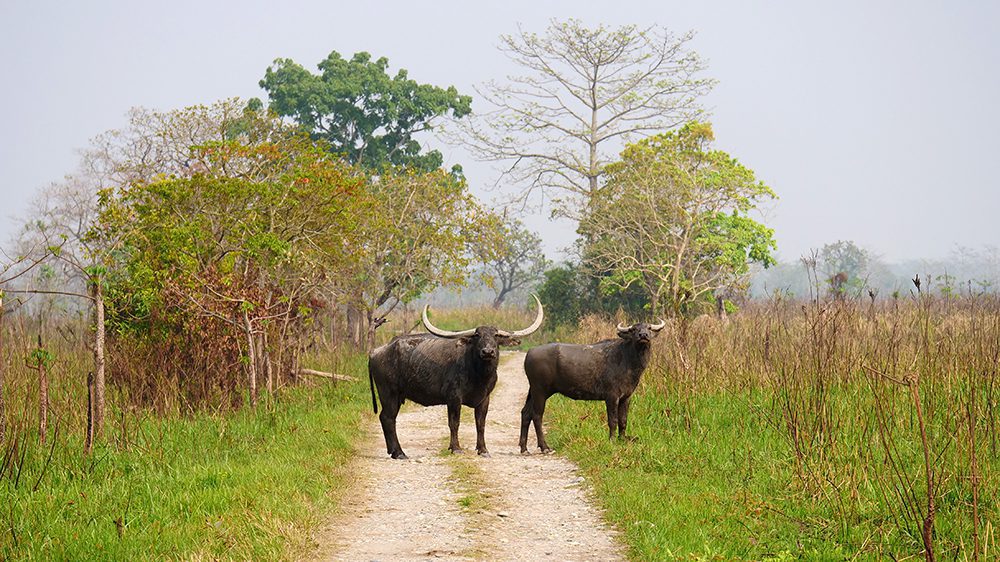
Be sure to book lodges and accommodations well in advance of your trip, especially if you plan on staying in the park multiple nights. Also, in this Manas National Park travel guide, we recommend bringing a good amount of Indian currency, especially if you’re a foreign tourist. Visiting the park isn’t too expensive, but it’s better to be safe than sorry. Have some cash on hand in case of an emergency.

Note that the weather in the area can be unpredictable and sudden rainstorms are common. Be sure to contact the forest authorities before your trip to figure out the best time for you to visit. That way, you can have the best experience possible and can hopefully avoid being disappointed by sudden shifts in the weather.
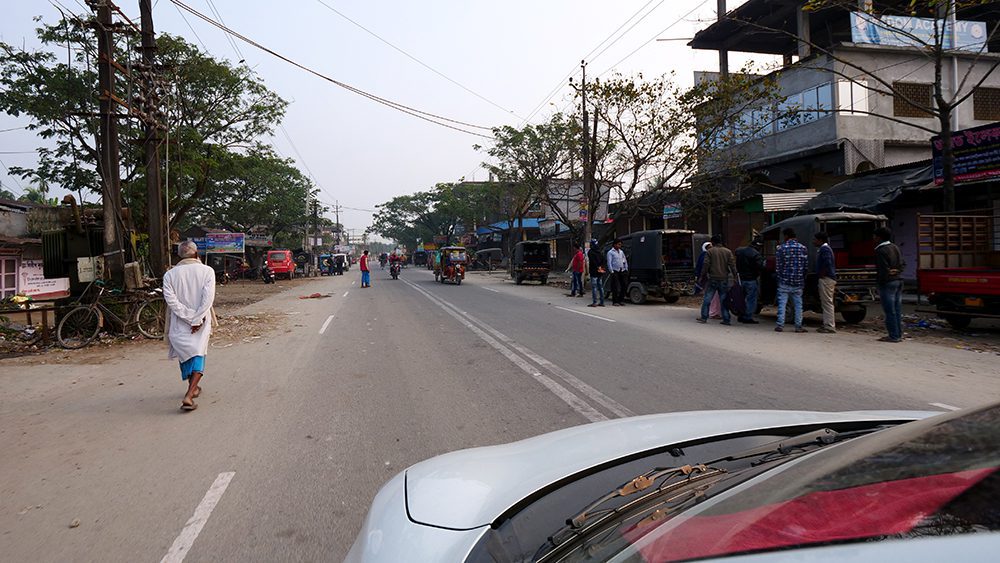
For travelers, the easiest way to reach Manas National Park is from the city of Guwahati, which is the best choice for a home base when visiting Assam. Manas National Park is located roughly 109 miles (176 km) from Guwahati and can be reached by driving north from the city. The roads are quite bumpy, but it’s more than worth it to visit this magnificent wildlife sanctuary.
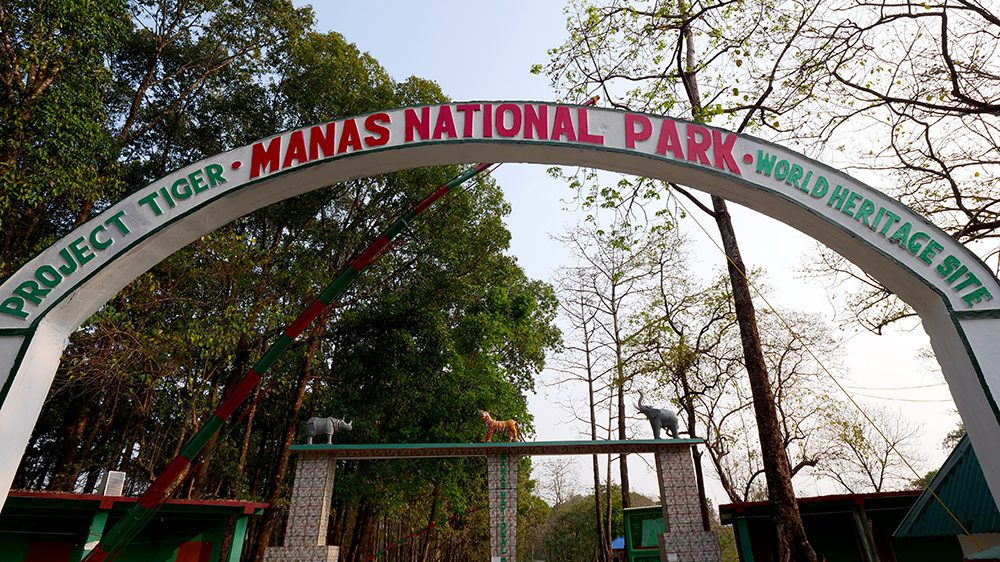
While a taxi ride can be a good option, I have found in my travels that making connections with locals is always the best way to go. The connections I made with Guwahati locals during the planning phase of my trip turned into genuine friendships once I arrived and began exploring with them.
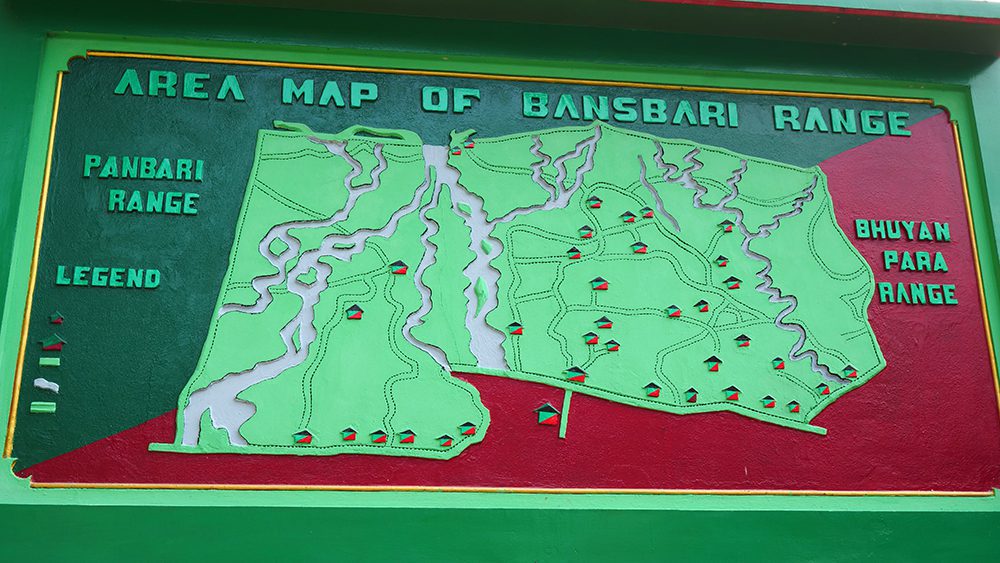
They very kindly took time out of their day to take me to Manas National Park so I could experience it for the first time. It took us about three hours to get there via National Highway 31, which takes you to the park’s entry point, Bansbari.

While traveling from Guwahati is one of the easiest ways to reach the park and is the one we recommend in this Manas National Park travel guide, it’s not the only one. Travelers in Kaziranga, Darjeeling, Shillong, and Siliguri can also reach Manas National Park by road. You can also access the park by train if you wish, but you’d have to get off at the railway junction at Barpeta Road and then travel an additional 19.8 miles (32 km) to get to the park.
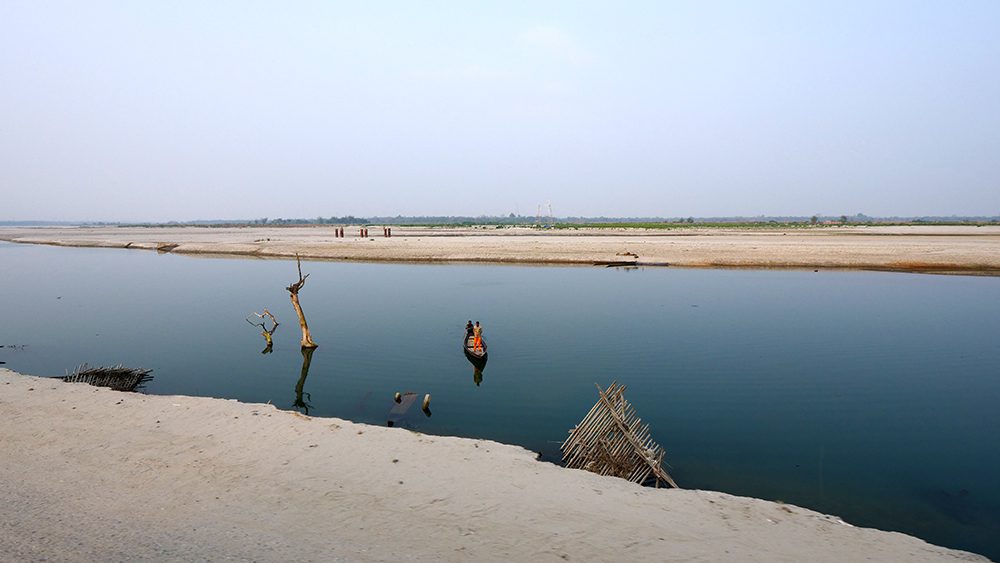
Because of the amount of time it takes to reach the park from Guwahati and the sheer number of things to do in the park, I suggest hitting the road as early as possible. The park opens at 6 a.m. and the first game drives of the day begin at 9, so be sure to get there in time for your first safari!

Once you arrive at Manas National Park, you will need to get permits to enter the park. You can get them from the Field Director’s office on Barpeta Road. While you can bring your own four-wheel vehicle into the park, this Manas National Park travel guide recommends hiring private Jeeps and guides for your game drives.

The gate entry at the park varies. Indian residents only pay 200 rupees for a full day, while the full-day entry fee for foreigners is 2,000 rupees.

For my full day at the park, which consists of two game drives, it cost 2,000 rupees (roughly $28.57 U.S.) to rent a vehicle. We also spent another 300 rupees (about $4.29 U.S.) for a driver and an additional 100 rupees, or $1.43 U.S., per person in your party. All in all, the total for my party came to 5,800 rupees (or roughly $82.87 U.S.) Not bad for a once-in-a-lifetime experience!
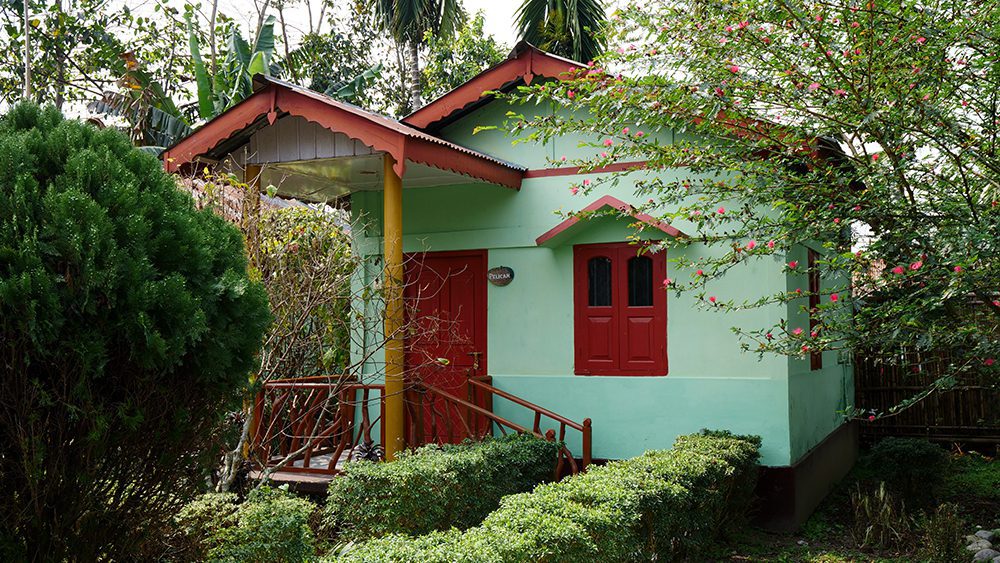
My friends and I based ourselves out of the cozy Florican Cottages. There are nine cottages in total, including smaller ones like mine, which contained a pair of beds, a nice bathroom, and a much-needed device to get rid of mosquitoes. Trust me, those Assamese mosquitoes are little beasts, so the device was a savior there!
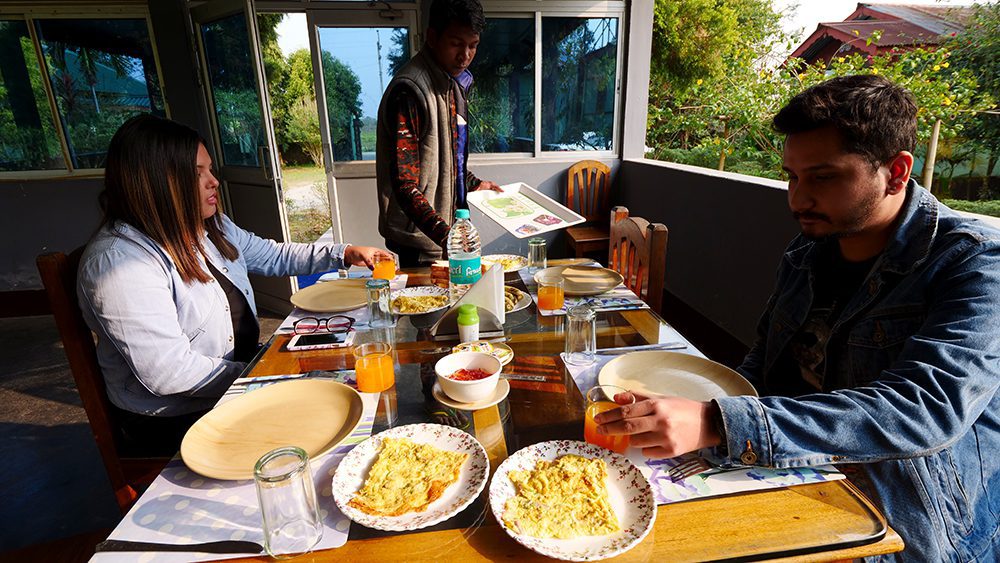
If you didn’t eat breakfast before you hit the road, doing so before your first game drive is a good idea. My friends and I enjoyed a tasty British-Indian breakfast at an open-air restaurant near the cottages. It consisted of toast, a delicious omelet with onion and herbs, a tangy orange marmalade, bananas, butter, and mango juice.

Between game drives, I recommend returning there to get some lunch. Mine consisted of a fantastic chicken curry with potatoes, carrots, and herbs in a rich sauce. I also had a wonderful yellow dal, mixed vegetables with curry, sticky rice, tomatoes, carrots, onion, cucumber, papad, and Indian French fries. It was the perfect Indian lunch!
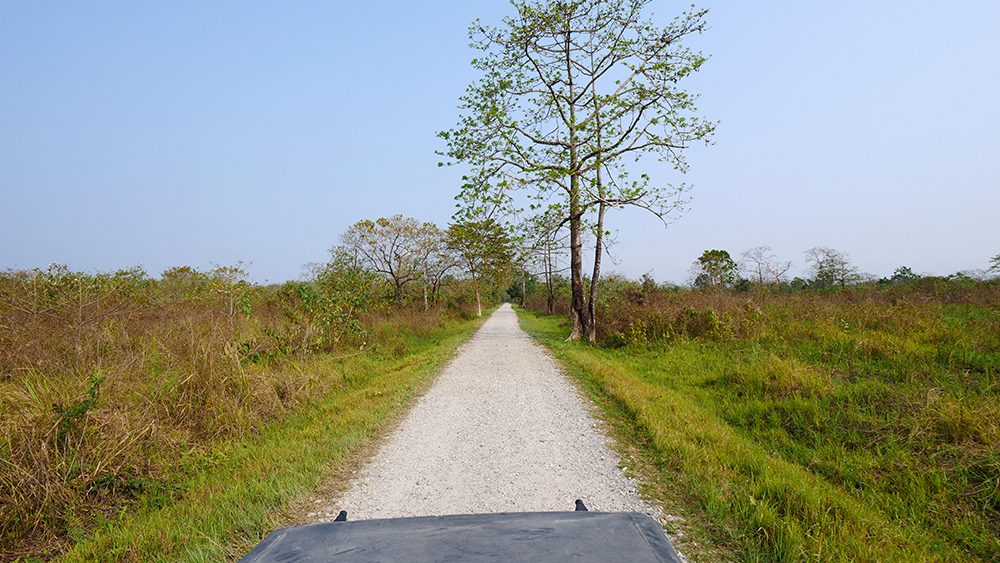
You can go on safaris, or game drives, twice per day in Manas National Park. The first game drive begins at 9 a.m. and concludes at noon. The evening game drive lasts from 2 p.m. until 5 p.m. In this Manas National Park travel guide, I highly recommend going on both. If you’re not crunched for time like I was, stay a few nights and do two game drives each day to increase your chances of seeing some of the park’s rarest animals.
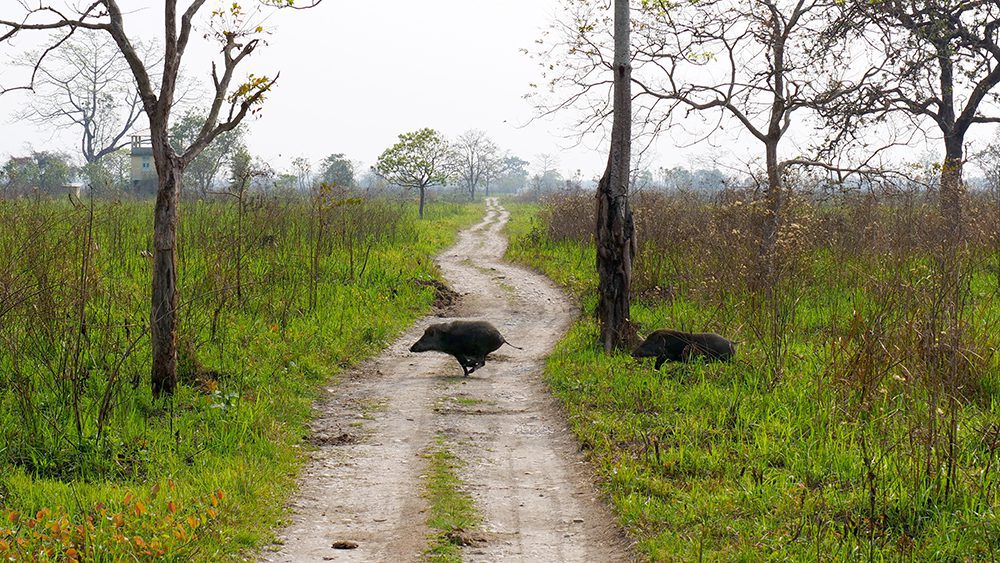
A wide variety of animals call Manas National Park home, including Asian elephants, tigers, clouded leopards, rhinos, water buffalo, macaques, gibbons, black panthers, deer, ducks, pelicans, peacocks, eagles, and much more.

The trick to having a good experience while on a game drive is to be patient. These are wild animals living in their natural habitat and therefore, it’s not always easy to find them. There’s no guarantee that you’re going to see any animals.
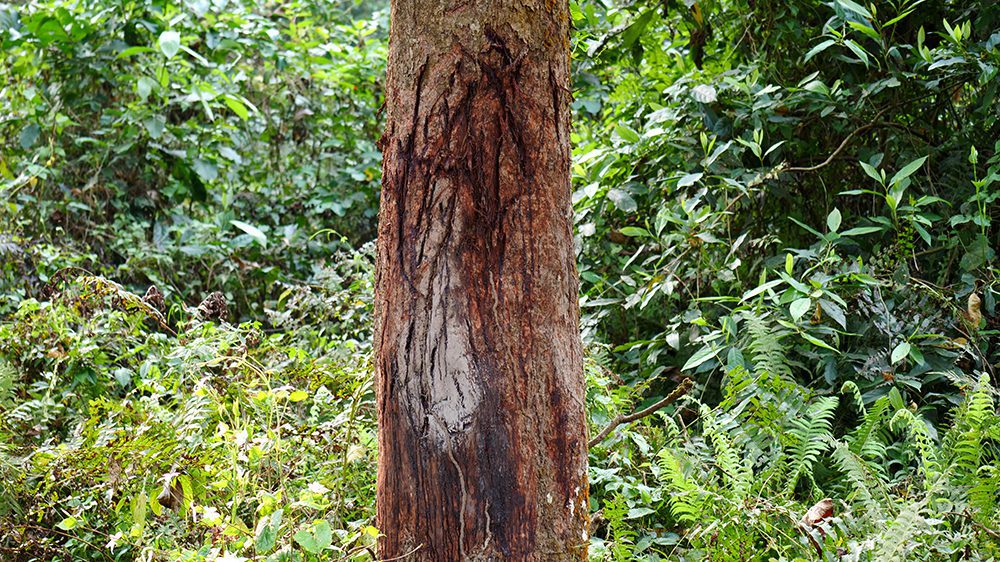
For example, although Manas National Park is a tiger reserve, tiger sightings are actually quite rare there. It’s luck of the draw. But if you’re patient and spend enough time there, chances are you’ll see something. Keep your expectations low and just enjoy the experience!
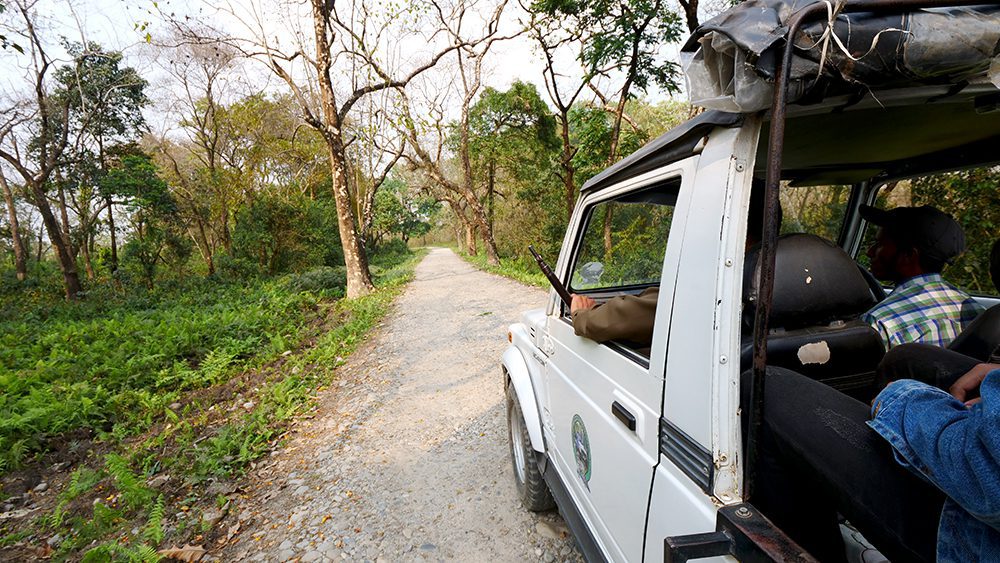
Between my two game drives, I did not encounter any tigers unfortunately, but I did see lots of elephants, peacocks, water buffalo, deer, and even some golden langur monkeys. To top it all off, I had a truly rare and remarkable experience I will remember for the rest of my life and can’t help but include in this Manas National Park travel guide.

At one point during my second game drive, we came across park guards riding on elephants near a watering hole. We were then approached by an adorable calf and had the awesome opportunity to watch the elephants bathe and splash around in the water with their guards! It was a beautiful and surreal thing to witness and was the undeniable highlight of my time in Manas National Park.

Believe it or not, game drives are just one of several activities you can enjoy in the park. If you have time, you can also enjoy a roughly 22-mile (35 km) river rafting adventure down the Manas River. This adventure will take you through deciduous forests that are home to 400 different bird species, so bring your binoculars to do some bird watching during the more tranquil sections.
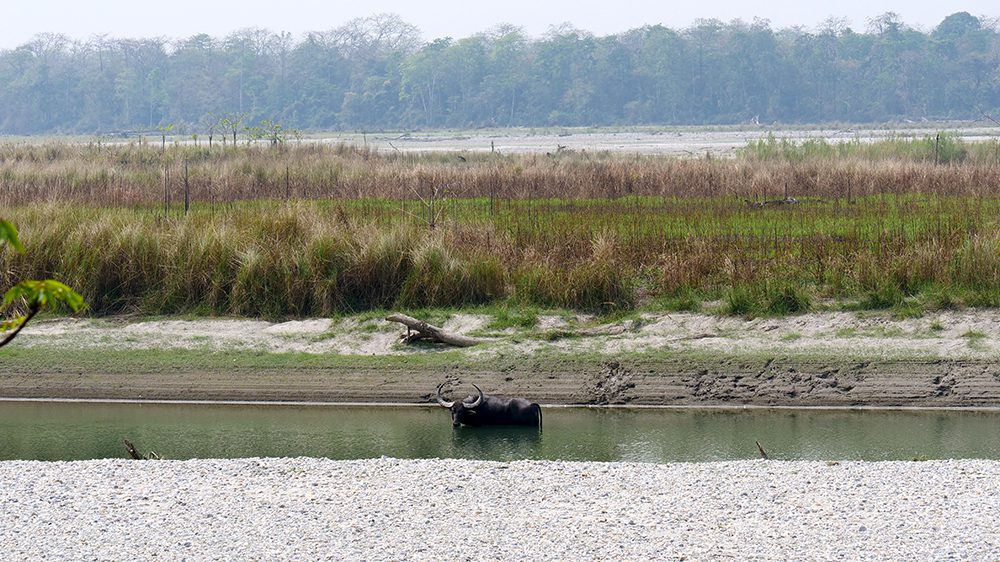
Park visitors can also visit the Bodo villages within Manas National Park and check out the nearby tea plantations, including Bansbari Tea Plantation. Because I had very limited time in the park, I didn’t get to experience any of these for myself, but I’ve heard they are all worthwhile experiences. If you check them out, leave me a comment below and tell me all about it!
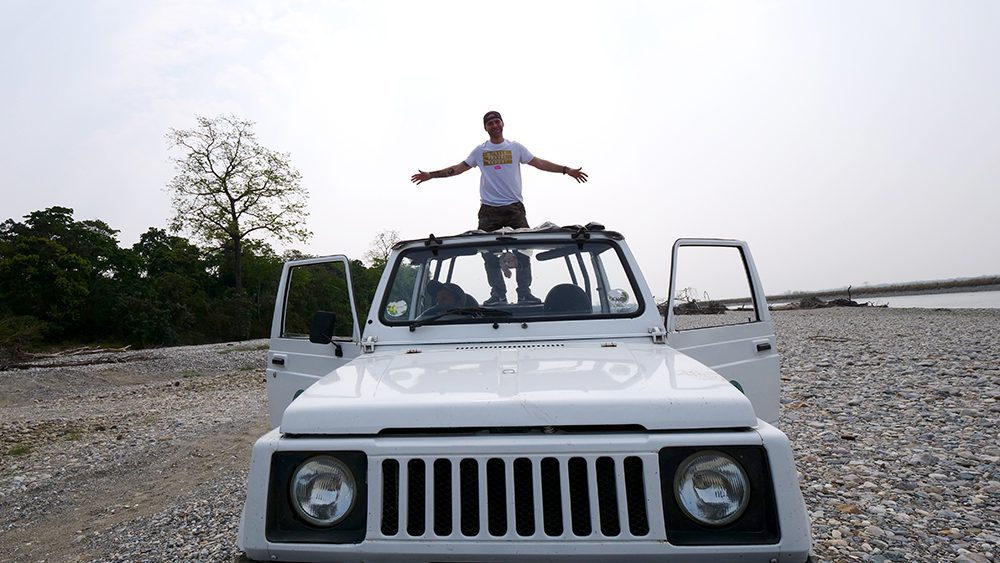
I hope you found this Manas National Park travel guide helpful! This place is one of the stunning natural wonders of northeast India. The beautiful setting in the foothills of the Himalayas, the gorgeous flora, and magnificent animals make it a truly magical destination for any nature or animal lover. Even if you don’t get to see the animals you want, coming to the park is still a beautiful, once-in-a-lifetime experience you need to have. Book a trip to Guwahati to begin your Manas National Park adventure today!
NOTE: Whenever you travel, I suggest you purchase travel insurance to protect yourself in case any emergency situations come up. In my opinion, AXA Travel Insurance is the very best because it covers a wide array of issues. Buy your AXA Travel Insurance protection plan here!
If you need to check the visa requirements of a particular country, click here. To apply for a visa, find up-to-date visa information for different countries, and calculate the cost of a particular visa, click here!
Counter
101 Countries • 1432 Cities